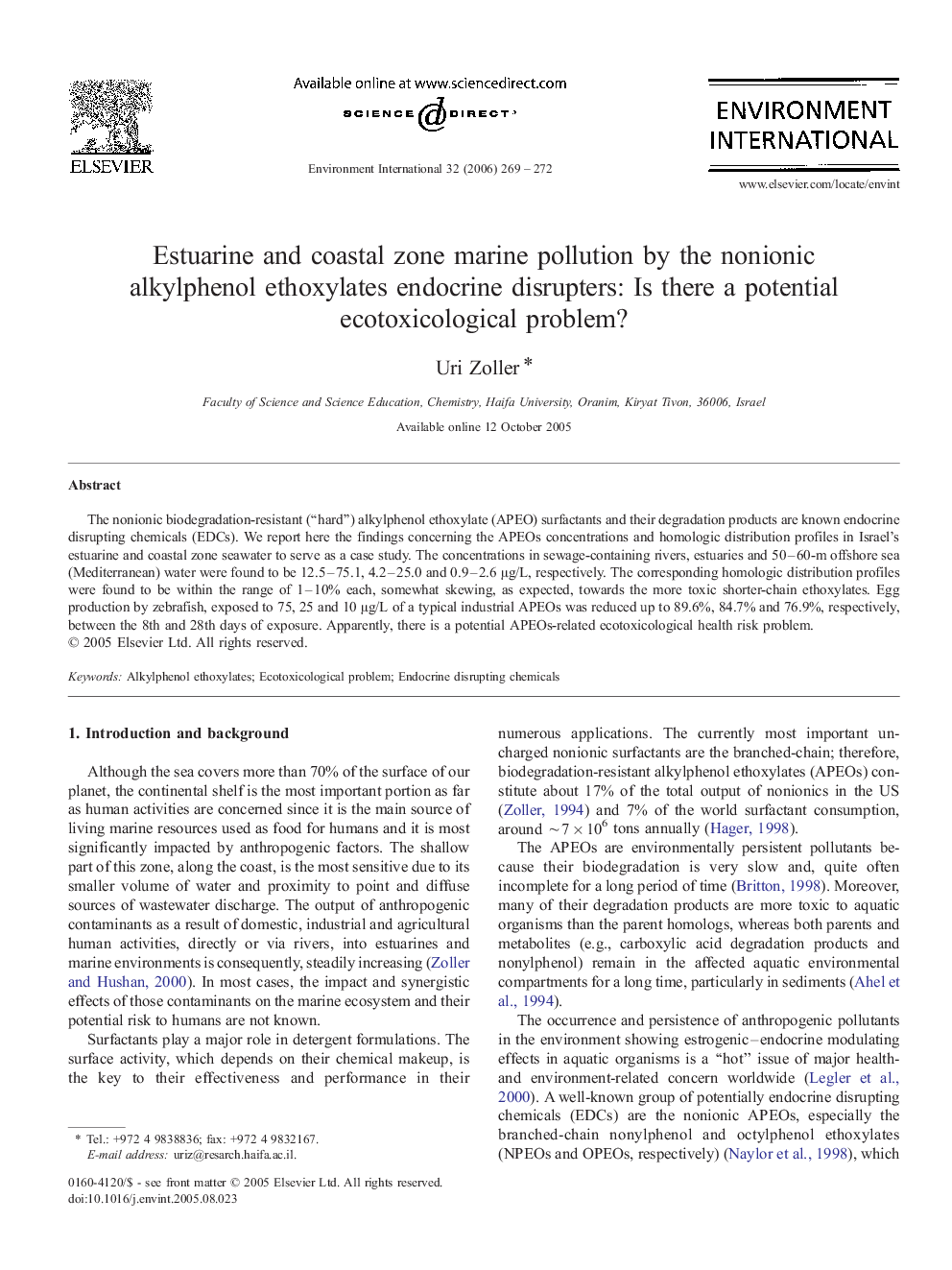| Article ID | Journal | Published Year | Pages | File Type |
|---|---|---|---|---|
| 4424173 | Environment International | 2006 | 4 Pages |
The nonionic biodegradation-resistant (“hard”) alkylphenol ethoxylate (APEO) surfactants and their degradation products are known endocrine disrupting chemicals (EDCs). We report here the findings concerning the APEOs concentrations and homologic distribution profiles in Israel's estuarine and coastal zone seawater to serve as a case study. The concentrations in sewage-containing rivers, estuaries and 50–60-m offshore sea (Mediterranean) water were found to be 12.5–75.1, 4.2–25.0 and 0.9–2.6 μg/L, respectively. The corresponding homologic distribution profiles were found to be within the range of 1–10% each, somewhat skewing, as expected, towards the more toxic shorter-chain ethoxylates. Egg production by zebrafish, exposed to 75, 25 and 10 μg/L of a typical industrial APEOs was reduced up to 89.6%, 84.7% and 76.9%, respectively, between the 8th and 28th days of exposure. Apparently, there is a potential APEOs-related ecotoxicological health risk problem.
